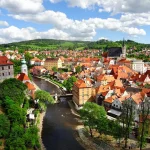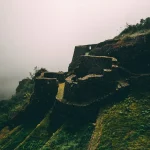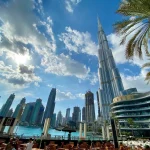
Discovering the Ancient Wonders of Cuzco: Exploring the Heart of Peru

Cuzco, located in the heart of the Andes Mountains in Peru, was once the capital of the Inca Empire. This ancient city holds great importance in Peruvian history and culture, as it was the center of political, religious, and administrative power for the Inca civilization. Today, Cuzco is a vibrant city that attracts visitors from all over the world who come to explore its rich history and experience its unique culture.
The Magnificent Machu Picchu
One of the most iconic and breathtaking sites in Cuzco is Machu Picchu. This ancient Inca citadel is considered one of the New Seven Wonders of the World and attracts millions of visitors each year. Machu Picchu is nestled high in the Andes Mountains and offers stunning panoramic views of the surrounding landscape.
The history and significance of Machu Picchu are still shrouded in mystery. It is believed to have been built around the 15th century as a royal estate for the Inca emperor Pachacuti. However, it was abandoned and forgotten for centuries until it was rediscovered by American explorer Hiram Bingham in 1911.
Visiting Machu Picchu requires careful planning and preparation. It is recommended to book tickets in advance, as there is a daily limit on the number of visitors allowed. Additionally, it is advisable to acclimatize to the high altitude before attempting to hike up to Machu Picchu. There are various hiking routes available, including the famous Inca Trail, which takes about four days to complete. Alternatively, visitors can take a train or bus to reach the site.
Exploring the Sacred Valley
The Sacred Valley, located just outside of Cuzco, was considered a sacred place by the Incas due to its fertile land and strategic location. It served as an agricultural center and played a crucial role in supporting the Inca Empire. Today, the Sacred Valley is a popular destination for tourists who want to explore the ancient ruins and experience the natural beauty of the region.
One of the highlights of the Sacred Valley is the town of Pisac, which is known for its impressive Inca ruins and vibrant market. The ruins of Pisac are perched on a hilltop and offer stunning views of the surrounding valley. The market in Pisac is a great place to buy traditional handicrafts, textiles, and fresh produce.
Another must-visit destination in the Sacred Valley is Ollantaytambo, a well-preserved Inca town that was once a royal estate. The ruins of Ollantaytambo feature impressive stone terraces and temples, and visitors can also explore the narrow cobblestone streets of the town itself.
To fully experience the Sacred Valley, it is recommended to take a guided tour or hire a local guide who can provide insights into the history and culture of the region. There are also various hiking and biking trails available for those who want to explore the valley at their own pace.
Discovering the Mystical Moray Terraces
The Moray Terraces, located near Maras in the Sacred Valley, are an agricultural marvel created by the Incas. These circular terraces were used as experimental agricultural sites, where different crops were grown at varying altitudes to test their adaptability to different climates. The temperature difference between each terrace created microclimates that allowed the Incas to cultivate a wide variety of crops.
Visiting the Moray Terraces is a unique experience that allows visitors to marvel at the ingenuity of the Inca civilization. It is recommended to hire a guide who can provide insights into the history and significance of this site. Additionally, it is advisable to wear comfortable shoes and bring sunscreen and water, as there is limited shade in the area.
The Enigmatic Sacsayhuaman
Sacsayhuaman, located just outside of Cuzco, is an ancient fortress that was once the site of fierce battles between the Incas and the Spanish conquistadors. This massive complex features impressive stone walls and terraces that were built with incredible precision and without the use of mortar.
The history and significance of Sacsayhuaman are still a subject of debate among historians. Some believe that it was primarily a military stronghold, while others argue that it had religious and ceremonial purposes as well. Regardless of its original function, Sacsayhuaman is a testament to the engineering skills of the Inca civilization.
Visiting Sacsayhuaman is a must for anyone interested in Inca history. The site offers stunning views of Cuzco and the surrounding mountains, and visitors can explore the various structures and walk along the ancient walls. It is recommended to hire a guide who can provide insights into the history and significance of this site.
The Colorful San Pedro Market
The San Pedro Market, located in the heart of Cuzco, is a vibrant cultural experience that should not be missed. This bustling market is filled with stalls selling fresh produce, local handicrafts, and traditional Peruvian food. It is a great place to immerse yourself in the local culture and sample delicious Peruvian cuisine.
One of the highlights of the San Pedro Market is the food section, where you can find a wide variety of traditional dishes such as ceviche, anticuchos (grilled skewers), and empanadas. There are also stalls selling fresh fruits, vegetables, and spices, as well as local products such as alpaca wool clothing and handmade jewelry.
Visiting the San Pedro Market is a sensory overload, with vibrant colors, enticing smells, and lively sounds filling the air. It is recommended to arrive early in the morning to avoid the crowds and to bring cash, as many vendors do not accept credit cards. Bargaining is also common in the market, so don’t be afraid to negotiate prices.
The Majestic Qenko
Qenko, located just outside of Cuzco, is an ancient ritual site that was used by the Incas for religious ceremonies and sacrifices. This site features a series of stone carvings and underground chambers that were believed to have been used for astronomical observations and rituals.
The history and significance of Qenko are still a subject of debate among archaeologists. Some believe that it was primarily a place of worship, while others argue that it had administrative and ceremonial purposes as well. Regardless of its original function, Qenko is a fascinating site that offers insights into the religious beliefs and practices of the Inca civilization.
Visiting Qenko is a unique experience that allows visitors to explore the underground chambers and marvel at the intricate stone carvings. It is recommended to hire a guide who can provide insights into the history and significance of this site. Additionally, it is advisable to wear comfortable shoes and bring sunscreen and water, as there is limited shade in the area.
The Fascinating Tambomachay
Tambomachay, located just outside of Cuzco, is a site of water worship that was used by the Incas for ceremonial purposes. This complex features a series of aqueducts, canals, and fountains that were believed to have been used for ritual bathing and purification.
The history and significance of Tambomachay are still a subject of debate among historians. Some believe that it was primarily a place of worship, while others argue that it had administrative and military purposes as well. Regardless of its original function, Tambomachay is a fascinating site that offers insights into the engineering skills of the Inca civilization.
Visiting Tambomachay is a unique experience that allows visitors to explore the various water features and learn about the religious beliefs and practices of the Incas. It is recommended to hire a guide who can provide insights into the history and significance of this site. Additionally, it is advisable to wear comfortable shoes and bring sunscreen and water, as there is limited shade in the area.
The Intriguing Pikillacta
Pikillacta, located just outside of Cuzco, is an ancient Wari city that predates the Inca civilization. This sprawling complex features impressive stone walls, plazas, and residential areas that offer insights into the urban planning and architectural skills of the Wari civilization.
The history and significance of Pikillacta are still a subject of debate among archaeologists. Some believe that it was primarily a military stronghold, while others argue that it had administrative and ceremonial purposes as well. Regardless of its original function, Pikillacta is a fascinating site that offers insights into the culture and society of the Wari civilization.
Visiting Pikillacta is a unique experience that allows visitors to explore the various structures and learn about the history and significance of this ancient city. It is recommended to hire a guide who can provide insights into the culture and society of the Wari civilization. Additionally, it is advisable to wear comfortable shoes and bring sunscreen and water, as there is limited shade in the area.
The Rich History of Cuzco
Cuzco has a rich history that dates back thousands of years. It was once the capital of the Inca Empire, which was one of the largest empires in pre-Columbian America. The Incas ruled over a vast territory that stretched from present-day Colombia to Chile, with Cuzco serving as their political, religious, and administrative center.
The Spanish conquistadors arrived in Cuzco in 1533 and quickly conquered the Inca Empire. They destroyed many of the Inca structures and built their own colonial buildings on top of the ruins. Today, visitors can see the remnants of both the Inca and Spanish civilizations in Cuzco, making it a unique blend of ancient and colonial architecture.
One of the highlights of Cuzco’s history is the Temple of the Sun, also known as Coricancha. This ancient Inca temple was covered in gold and filled with precious artifacts, but it was looted and destroyed by the Spanish conquistadors. Today, only the stone walls remain, but they still bear witness to the grandeur of the Inca civilization.
Another important historical site in Cuzco is the Plaza de Armas, which was once the center of Inca ceremonies and is now a bustling square filled with shops, restaurants, and colonial buildings. The plaza is a great place to soak up the atmosphere of Cuzco and learn about its history.
To fully explore Cuzco’s history, it is recommended to take a guided tour or hire a local guide who can provide insights into the various historical sites. Additionally, it is advisable to acclimatize to the high altitude before exploring the city, as Cuzco is located at an elevation of over 11,000 feet.
Cuzco is a city that holds great significance in Peruvian history and culture. From its role as the capital of the Inca Empire to its rich colonial heritage, Cuzco offers a unique blend of ancient and modern attractions. Whether you are interested in exploring ancient ruins, experiencing vibrant markets, or learning about indigenous cultures, Cuzco has something for everyone.
Visiting Cuzco is like stepping back in time and immersing yourself in a rich tapestry of history and culture. The city’s ancient ruins, vibrant markets, and colonial architecture offer a glimpse into Peru’s fascinating past. So, if you’re looking for a destination that combines natural beauty, cultural heritage, and historical significance, look no further than Cuzco.
If you’re planning a trip to Cuzco, Peru, you might also be interested in exploring the wonders of Sweden. From its stunning landscapes to its rich history and culture, Sweden offers a unique travel experience. Check out this article for a comprehensive guide on exploring Sweden’s top attractions and hidden gems. Whether you’re interested in visiting Stockholm’s beautiful archipelago or exploring the picturesque countryside, this article will provide you with all the information you need to plan your Swedish adventure.
Recent Posts


Discovering the Mystical Beauty of Ancient Inca Trails in Peru
